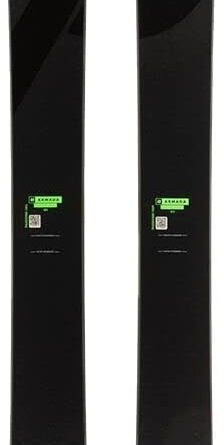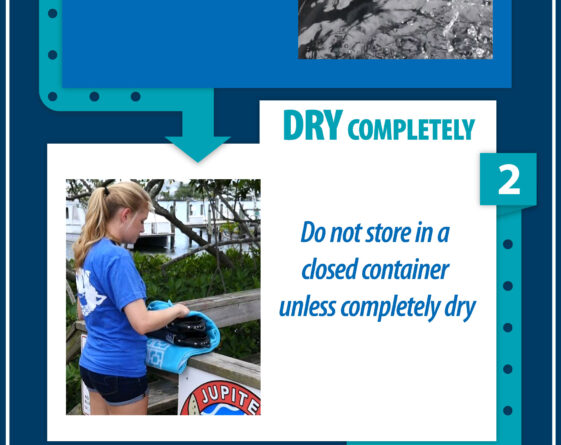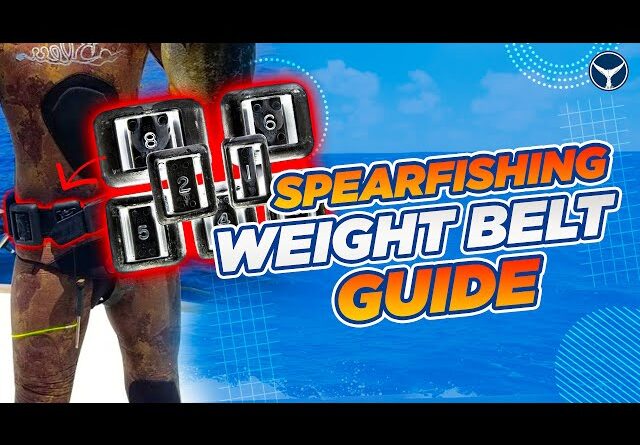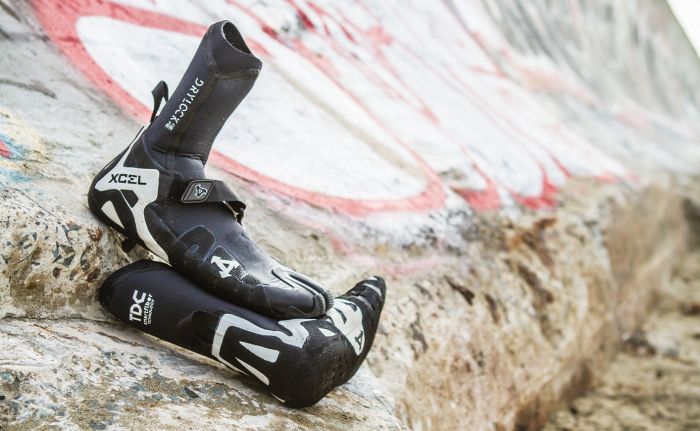
Are you an avid scuba diver who wants to ensure the longevity of your beloved scuba diving wetsuit boots? Look no further! In this comprehensive guide, you will find all the tips and tricks you need to properly care for and store your wetsuit boots, so they can accompany you on countless underwater adventures. From cleaning techniques to storage recommendations, we’ve got you covered. Get ready to learn how to keep your scuba diving wetsuit boots in pristine condition for years to come!
Cleaning Your Scuba Diving Wetsuit Boots
Rinsing off Saltwater and Sand
After each dive, it is important to rinse off your scuba diving wetsuit boots to remove any saltwater and sand. Simply dunk your boots in fresh water and give them a gentle shake to dislodge any particles. This will help prevent saltwater and sand from drying and causing discomfort or damage to your boots.
Using Mild Soap or Wetsuit Cleaner
For a more thorough cleaning, you can use mild soap or a wetsuit cleaner specifically designed for neoprene material. Avoid using harsh chemicals or detergents as they can degrade the neoprene and affect the integrity of your boots. Gently massage the soap or cleaner onto the boots, paying attention to any heavily soiled areas.
Gently Washing the Boots
Once you have applied the soap or cleaner, use a soft sponge or cloth to gently scrub the boots. Be careful not to scrub too vigorously, as this can cause unnecessary wear on the neoprene. Focus on areas that may have accumulated dirt or grime, such as the soles or seams. Rinse the boots thoroughly with fresh water to remove any soap residue.
Removing Persistent Stains
If you encounter persistent stains on your boots, you can try using a mixture of mild detergent and warm water. Create a solution and soak the stained areas for a few minutes before gently scrubbing with a soft brush. Rinse the boots thoroughly to ensure all the detergent is removed. For particularly stubborn stains, you may need to consult a professional wetsuit cleaner.
Drying the Boots Properly
Properly drying your scuba diving wetsuit boots is crucial to prevent the growth of mold or bacteria. Start by squeezing out any excess water from the boots. Then, hang them in a shaded and well-ventilated area. Avoid direct sunlight, as it can cause the neoprene to deteriorate. Ensure the boots are fully dry before storing them to maintain their quality and freshness.
Storing the Boots
When it comes to storing your scuba diving wetsuit boots, it is essential to avoid folding or crumpling them. Store them in a flat position, ensuring that they are completely dry before storing. Consider using a hanger or a boot-specific storage device to maintain their shape. Keep them away from direct sunlight and extreme temperatures to prevent any damage to the neoprene.
Avoiding Exposure to Extreme Temperatures
Extreme temperatures can have a detrimental effect on the neoprene material of your scuba diving wetsuit boots. Avoid exposing them to excessive heat or cold, as this can cause the neoprene to become brittle or lose its flexibility. If you plan to dive in colder waters, invest in thermal boots specifically designed to provide insulation and protection against low temperatures.
Maintaining the Integrity of Your Scuba Diving Wetsuit Boots
Inspecting for Damage or Wear
Regularly inspect your scuba diving wetsuit boots for any signs of damage or wear. Check the seams, soles, and zippers for any tears, loose threads, or separation. If you notice any damage, address it promptly to prevent further deterioration and potential leaks.
Repairing Minor Tears or Holes
If you come across minor tears or holes in your boots, it is recommended to repair them as soon as possible. Neoprene repair kits are readily available and can be used to patch up small damages. Follow the instructions provided with the repair kit to ensure a proper repair. It is important to address even small tears, as they can worsen over time and compromise the functionality of your boots.
Replacing Damaged Zippers
Zippers are one of the more vulnerable parts of scuba diving wetsuit boots and can fail over time. If you experience issues with your zippers, such as sticking or separating, it may be necessary to replace them. This should be done by a professional or someone with experience in replacing zippers on scuba diving gear. A faulty zipper can significantly affect your diving experience and may lead to water ingress.
Avoiding Contact with Sharp Objects
To maintain the integrity of your scuba diving wetsuit boots, it is important to avoid contact with sharp objects. Walking on rocky surfaces or dropping heavy objects on your boots can cause cuts or punctures. Be mindful of your surroundings and choose appropriate paths when walking to and from the dive site. Consider wearing boot covers or protective guards if you anticipate exposure to sharp objects.
Using Boots Only for Diving
While it may be tempting to use your scuba diving wetsuit boots for activities other than diving, it is best to reserve them solely for their intended purpose. Using them for activities like walking on rough terrain or hiking can lead to unnecessary wear and tear. Additionally, exposure to different chemicals or oils commonly found in non-diving environments can degrade the neoprene and compromise its performance.
Avoiding Proximity to Chemicals or Oil
When storing or wearing your scuba diving wetsuit boots, it is crucial to keep them away from chemicals or oil. Certain substances, such as gasoline, solvents, or harsh cleaning agents, can cause the neoprene to deteriorate or change its physical properties. Avoid leaving your boots near such substances and always handle them with clean hands to prevent any oil transfer.
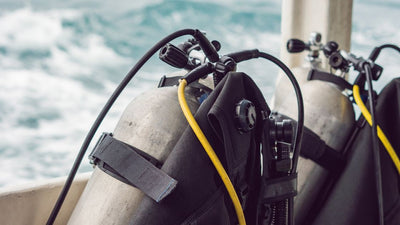
This image is property of divenewcastle.com.au.
Preventing Unpleasant Odors in Your Scuba Diving Wetsuit Boots
Properly Rinsing and Drying the Boots
One of the main causes of unpleasant odors in scuba diving wetsuit boots is bacteria or mold growth due to improper rinsing and drying. After each dive, make sure to thoroughly rinse your boots to remove any saltwater or debris. Properly dry them before storing, as moisture provides an ideal breeding ground for odor-causing bacteria. By ensuring the boots are clean and dry, you can significantly reduce the likelihood of odors.
Using Baking Soda or Vinegar
If you notice persistent odors in your scuba diving wetsuit boots, you can try using baking soda or vinegar as natural odor eliminators. Sprinkle a small amount of baking soda into each boot and let it sit for a few hours to absorb any odors. Alternatively, you can mix equal parts vinegar and water and use a spray bottle to apply the solution inside the boots. Allow them to air dry completely before use.
Utilizing Odor-Neutralizing Sprays
Another option to combat odors is to use commercially available odor-neutralizing sprays specifically designed for wetsuit boots. These sprays can effectively eliminate odors and provide a fresh scent to your boots. Follow the instructions provided with the spray and ensure the boots are dry before applying. Regular use of an odor-neutralizing spray can help keep your scuba diving wetsuit boots smelling clean and fresh.
Rotating Your Boots
To prevent odors from developing, it is beneficial to rotate your scuba diving wetsuit boots. By allowing them to fully dry and air out between uses, you reduce the chances of bacteria or mold growth. Consider having multiple pairs of boots so that you have a dry pair available for each dive. This rotation system will help maintain the freshness of your boots and minimize any potential odors.
Storing the Boots in a Ventilated Space
Properly storing your scuba diving wetsuit boots in a well-ventilated space can also help prevent unpleasant odors. Choose a storage area that allows air circulation and minimizes humidity. Avoid storing them in sealed containers or enclosed spaces that can promote dampness and odor buildup. A well-ventilated area will facilitate the drying process and keep your boots odor-free.
Evaluating the Fit of Your Scuba Diving Wetsuit Boots
Ensuring Appropriate Size
When it comes to scuba diving wetsuit boots, the right fit is essential for comfort and functionality. Ensure that you choose the appropriate size for your feet. Boots that are too tight can restrict circulation and cause discomfort, while boots that are too loose can lead to chafing and blisters. Take accurate measurements of your feet and refer to the manufacturer’s size chart for the best fit.
Considering Different Thicknesses
Scuba diving wetsuit boots come in different thicknesses to accommodate a range of water temperatures. Consider the water conditions of your diving locations and choose the appropriate thickness. Thicker boots provide more insulation in colder waters, while thinner boots are suitable for warmer climates. It is important to have boots that keep your feet warm but also allow for flexibility and comfort.
Allowing for Some Stretch
It is common for scuba diving wetsuit boots to fit snugly when new. However, keep in mind that neoprene has a tendency to stretch over time. Allow for some stretch when choosing your boots by opting for a slightly tighter fit initially. This will prevent the boots from becoming too loose after extended use. Remember to account for this when evaluating the fit, particularly if you have owned the boots for a while.
Testing Boots in Water
To ensure that your scuba diving wetsuit boots provide a proper fit, it is helpful to test them in water before diving. Fill a basin or tub with water and immerse your boots while wearing them. Walk around and simulate movements you would typically perform while diving. This will give you a better sense of how the boots feel in a real diving environment and if any adjustments are necessary.
Seeking Professional Assistance
If you are uncertain about finding the right fit or have specific foot requirements, it may be helpful to seek professional assistance. Dive shop staff or experienced divers can provide valuable insights and guidance when it comes to selecting scuba diving wetsuit boots. They can help you navigate the options available and ensure you find boots that are comfortable, functional, and tailored to your specific needs.

This image is property of www.scuba-diving-smiles.com.
Choosing the Right Scuba Diving Wetsuit Boots
Determining the Water Temperature
Before choosing scuba diving wetsuit boots, it is important to determine the water temperature you will be diving in. Water temperatures can vary greatly depending on the location and season. Boots designed for colder water have thicker neoprene for insulation, while boots for warmer water are thinner and provide better breathability. Consider the average temperatures of your dive destinations to select the appropriate boots.
Selecting the Ideal Boot Thickness
The thickness of scuba diving wetsuit boots plays a crucial role in providing insulation and protecting your feet from the cold. Thicker boots are recommended for colder water, typically ranging from 5mm to 8mm neoprene thickness. In warmer waters, boots with a thickness of 2mm to 5mm can provide sufficient protection without causing overheating. Choose a boot thickness that matches the water temperature for optimal comfort.
Considering Different Boot Styles
Scuba diving wetsuit boots come in various styles to cater to different preferences and diving conditions. Zipper boots offer convenience and ease of wearing, while slip-on boots provide a simpler design without zippers. Split toe boots have a divided toe design, which can enhance stability and balance. Hard sole boots offer additional protection against rocky surfaces. Thermal boots are specifically designed for cold water diving, providing insulation and warmth. Consider the unique features of each boot style to find the one that best suits your diving needs.
Evaluating Material Quality
When choosing scuba diving wetsuit boots, it is important to prioritize material quality. Opt for boots made from high-quality neoprene, as it offers excellent flexibility, durability, and insulation. Look for boots that are double-lined or reinforced in critical areas such as the sole, heel, and toe. These reinforcements enhance the boots’ resistance to wear and tear, ensuring longevity and optimal performance.
Ensuring Proper Ankle Support
Ankle support is an important consideration when selecting scuba diving wetsuit boots. Look for boots that provide adequate ankle support to minimize the risk of strains or injuries. Boots with a taller design or built-in ankle straps can offer additional stability and protection. Proper ankle support will enhance your diving experience, increase comfort, and reduce the likelihood of ankle-related issues.
Putting On and Taking Off Your Scuba Diving Wetsuit Boots
Ensuring a Comfortable Fit
Putting on scuba diving wetsuit boots should be a comfortable and hassle-free process. Make sure you have selected the right size and style that offers a snug yet comfortable fit. Ensure that your feet are properly dried and free from any debris or sand before attempting to put on the boots. A proper fit will eliminate discomfort and promote optimal functionality underwater.
Using Plastic Bags or Waterproof Socks
To make putting on scuba diving wetsuit boots easier, you can use plastic bags or waterproof socks. Simply slip a plastic bag or waterproof sock over your foot before sliding it into the boot. This helps reduce friction and allows for a smoother entry. Once your foot is comfortably inside the boot, remove the plastic bag or sock and repeat the process for the other foot.
Stretching the Boots for Easier Donning
Some scuba diving wetsuit boots may require a bit of stretching before you can easily put them on. To stretch the boots, gently tug on the material around the opening or use a boot stretcher tool specifically designed for neoprene. This will gradually expand the opening and make the process of putting on the boots easier and more comfortable.
Removing the Boots Properly
Taking off scuba diving wetsuit boots properly is as important as putting them on. To remove the boots, use your hands to grip the boot opening firmly. Slowly peel the boot off, starting from the heel and rolling it down towards the toe. Avoid using excessive force or pulling on the neoprene, as this can cause damage over time. Take your time and be gentle when removing the boots to preserve their integrity.
Cleaning Feet and Boots After Diving
After a dive, it is crucial to clean both your feet and scuba diving wetsuit boots to maintain hygiene and prevent odor buildup. Rinse your feet thoroughly with fresh water to remove any saltwater or debris. Use mild soap or a foot-specific cleanser to ensure your feet are clean and fresh. Rinse your boots inside and out to remove any remaining saltwater or sand. Properly drying the boots is essential to prevent the growth of bacteria or mold.
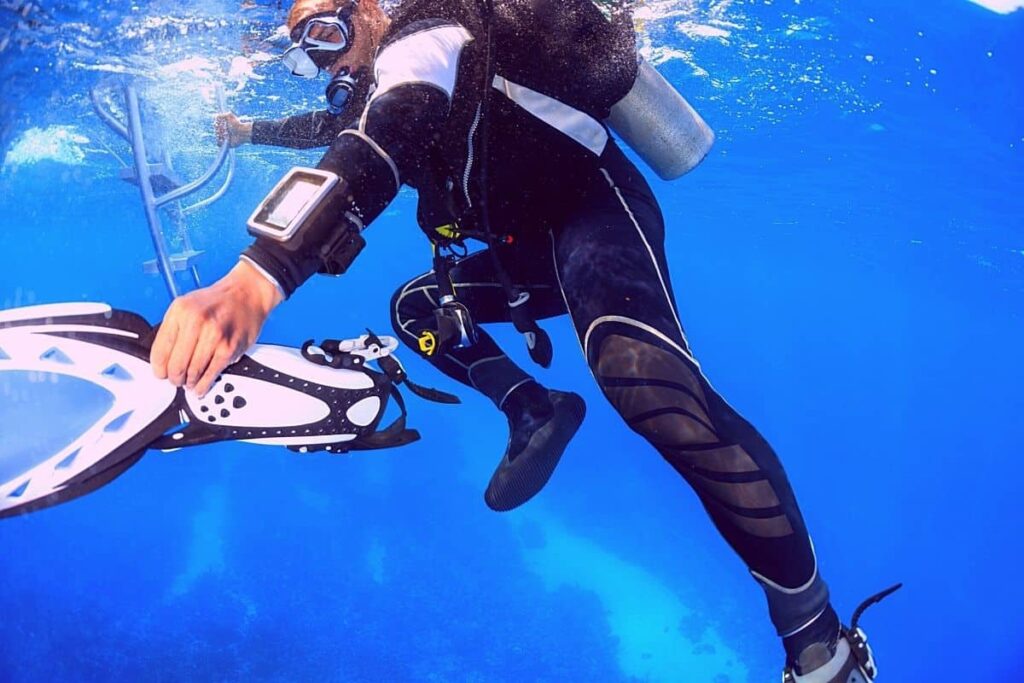
This image is property of proadventureguide.com.
Staying Safe with Scuba Diving Wetsuit Boots
Checking for Slip-Resistant Soles
When choosing scuba diving wetsuit boots, it is essential to check for slip-resistant soles. The soles should provide sufficient grip and traction to minimize the risk of slipping or sliding on wet surfaces, such as boat decks or rocky shorelines. Look for boots with rubber or reinforced soles that offer excellent traction and stability, even in challenging underwater or surface conditions.
Choosing the Right Traction
Different dive environments require varying levels of traction. Choose scuba diving wetsuit boots with the appropriate level of traction for your diving conditions. Soles with deeper treads or enhanced grip patterns can provide better traction on slippery or uneven surfaces. If you frequently dive in locations with rough terrain or strong currents, prioritize boots with superior traction to ensure your safety and stability.
Avoiding Loose Fittings
Wearing scuba diving wetsuit boots that are too loose can compromise your safety underwater. Loose-fitting boots can lead to blisters, chafing, or unwanted water ingress. Ensure that your boots fit snugly and securely to avoid any discomfort or potential hazards. The right fit will promote proper movement and provide necessary protection against potential injuries.
Being Aware of Hazards
When diving with scuba diving wetsuit boots, it is important to remain aware of potential hazards. Pay attention to your surroundings and be mindful of sharp objects, coral reefs, or marine life that may pose a risk. Avoid stepping on delicate marine ecosystems or touching potentially dangerous marine creatures. By being cautious and aware, you can minimize the chances of injury both to yourself and the marine environment.
Using Fins Properly
Scuba diving wetsuit boots often go hand in hand with fins, which are essential for propulsion and maneuverability underwater. Ensure that your fins fit properly and securely over your boots. Practice proper finning techniques to maximize efficiency and minimize strain on your feet and ankles. Remember to use your fins responsibly and be considerate of other divers and marine life while in the water.
Extending the Lifespan of Your Scuba Diving Wetsuit Boots
Properly Cleaning and Maintaining
Regularly cleaning and maintaining your scuba diving wetsuit boots is key to extending their lifespan. Follow the cleaning steps mentioned earlier in this article to remove saltwater, sand, and debris after each dive. Ensure proper drying before storing the boots to prevent mold or bacteria growth. By practicing good cleaning habits, you can prolong the durability and performance of your boots.
Regular Inspection and Repairs
Performing regular inspections on your scuba diving wetsuit boots is essential for identifying any signs of damage or wear. Inspect the seams, soles, zippers, and overall condition of the boots. Address minor repairs promptly to prevent further deterioration. Regularly inspecting and addressing issues in a timely manner will help preserve the integrity of your boots and extend their lifespan.
Using Boot Covers
Consider using boot covers to provide an extra layer of protection for your scuba diving wetsuit boots. Boot covers are designed to shield the boots from sharp objects and rough surfaces while moving around on land or navigating challenging underwater terrains. Boot covers can significantly reduce wear and tear, ultimately extending the lifespan of your boots.
Avoiding Unnecessary Wear
To prolong the lifespan of your scuba diving wetsuit boots, it is important to avoid unnecessary wear and tear. Refrain from walking on rough surfaces or using your boots for activities other than diving. Excessive bending or twisting of the boot material can lead to premature deterioration. By using your boots solely for their intended purpose, you minimize unnecessary stress on the neoprene material.
Investing in Quality Boots
Investing in high-quality scuba diving wetsuit boots from reputable brands is a smart decision for extending their lifespan. Boots made from premium neoprene and reinforced with robust features will withstand the rigors of diving and last longer. Quality boots also offer better resistance to wear, tear, and exposure to various diving conditions. Consider your diving frequency and preferences when selecting boots and prioritize durability and longevity.

This image is property of cdn.wetsuitoutlet.co.uk.
Understanding the Different Types of Scuba Diving Wetsuit Boots
Zipper Boots
Zipper boots feature a zipper closure along the side or back, allowing for easy donning and removal. This style is popular among divers who value convenience and want a quick and hassle-free boot option. The zipper provides a secure fit and prevents water from entering the boots. Zipper boots are suitable for a variety of diving conditions and often offer additional features such as reinforced soles or ankle support.
Slip-On Boots
Slip-on boots have a simple design without zippers or closures. They are typically made from stretchy neoprene material that allows for easy entry and provides a snug fit. Slip-on boots are favored for their simplicity and lightweight nature. They are an excellent choice for warm-water diving or as a backup pair of boots due to their compactness and ease of carrying.
Split Toe Boots
Split toe boots have a divided toe design, with a separate pocket for the big toe. This design enhances stability and balance, making them popular among divers who prioritize agility and control. Split toe boots provide excellent traction and are suitable for a range of diving environments, particularly those with rocky or uneven surfaces. The divided toe design promotes a secure fit and prevents toe slippage within the boot.
Hard Sole Boots
Hard sole boots feature a reinforced sole made from materials such as rubber or rigid plastic. The hard sole offers enhanced protection against sharp rocks, rough surfaces, or potential hazards. These boots are ideal for divers who frequently encounter challenging terrains or require additional foot support. Hard sole boots provide excellent stability and durability, making them a reliable choice for various diving conditions.
Thermal Boots
Thermal boots are specifically designed for cold water diving, offering superior insulation and warmth. They are made with thick neoprene and often feature additional thermal lining or insulation materials. Thermal boots provide exceptional heat retention and help to keep feet comfortable and protected from extremely low temperatures. When diving in colder waters, thermal boots are essential for maintaining warmth and preventing cold-related injuries.
Keeping Your Scuba Diving Wetsuit Boots Comfortable
Choosing the Right Thickness
Comfort is key when it comes to scuba diving wetsuit boots. Choosing the right thickness is vital to ensure your feet stay warm without feeling constricted. Thicker boots provide more insulation in colder waters but may feel bulky in warmer conditions. Thinner boots offer better flexibility and breathability in warmer waters but may not provide sufficient warmth in colder environments. Consider the water temperature and your personal comfort preferences when selecting the appropriate boot thickness.
Ensuring Proper Fit
A comfortable fit is crucial for overall comfort and functionality of scuba diving wetsuit boots. Properly fitted boots should provide a snug yet comfortable fit, allowing for natural movement while minimizing slippage or friction. Avoid boots that are too tight, as they can restrict blood circulation and cause discomfort. Conversely, avoid boots that are too loose, as they can lead to chafing, blisters, or instability underwater.
Avoiding Excessive Tightness
While a snug fit is important, it is equally vital to avoid excessive tightness in your scuba diving wetsuit boots. Overly tight boots can restrict blood flow and lead to discomfort, numbness, or even cold-related injuries. Make sure to choose the correct size and try on different boots to find the right balance between snugness and comfort. When in doubt, seek advice from knowledgeable professionals or experienced divers who can help guide you towards finding the perfect fit.
Considering Sock Thickness
To enhance comfort and improve the fit of your scuba diving wetsuit boots, consider wearing neoprene socks underneath. Neoprene socks provide an additional layer of insulation, cushioning, and protection. Choose socks with a thickness that complements your boots and the water temperature. Thicker socks can provide extra warmth in colder conditions, while thinner socks may be more suitable for warmer waters.
Using Moisturizers or Lubricants
If you experience chafing or discomfort while wearing scuba diving wetsuit boots, you can apply moisturizers or lubricants to alleviate the friction. Use products specifically formulated for use with neoprene to avoid degrading the material. Apply a small amount of moisturizer or lubricant to areas prone to rubbing or chafing, such as the heel or ankle. This can help reduce friction and improve overall comfort during your dives.
In order to properly care for and store your scuba diving wetsuit boots, follow these steps to ensure their longevity and optimal performance. By rinsing off saltwater and sand, using mild soap or wetsuit cleaner, and gently washing the boots, you can maintain their cleanliness and functionality. Removing persistent stains, drying the boots properly, and storing them in a cool, dry place will prevent any damage and maintain their quality over time.
To maintain the integrity of your scuba diving wetsuit boots, inspect them regularly for any damage or wear. Repair minor tears and holes promptly, and consider replacing damaged zippers for optimal performance. Additionally, be mindful of avoiding contact with sharp objects and using the boots exclusively for diving. Avoid exposure to chemicals or oil, as they can degrade the neoprene material.
Preventing unpleasant odors in your scuba diving wetsuit boots can be achieved by properly rinsing and drying the boots after each use. You can also use baking soda or vinegar to eliminate odors, or utilize odor-neutralizing sprays. Remember to rotate your boots and store them in a well-ventilated space to keep them fresh and odor-free.
When evaluating the fit of your scuba diving wetsuit boots, ensure that you have chosen the appropriate size and thickness for your feet. Consider factors like stretch, water testing, and seeking professional assistance to guarantee a comfortable and secure fit. The right fit will enhance your diving experience and prevent any discomfort or potential injuries.
Choosing the right scuba diving wetsuit boots involves considering factors such as water temperature, boot thickness, style, material quality, and ankle support. By carefully evaluating these aspects, you can select boots that suit your specific diving needs and provide utmost comfort and protection.
Putting on and taking off your scuba diving wetsuit boots should be done with care and comfort in mind. Ensure a comfortable fit by using plastic bags or waterproof socks, stretching boots when necessary, and properly removing them. After diving, clean your feet and boots to maintain hygiene and prevent odor buildup.
Staying safe with scuba diving wetsuit boots involves checking for slip-resistant soles, choosing the right traction for different diving conditions, avoiding loose fittings, being aware of potential hazards, and using fins properly. By following these safety precautions, you can enjoy your dives with confidence and reduce the risk of accidents or injuries.
To extend the lifespan of your scuba diving wetsuit boots, properly clean and maintain them, perform regular inspections and repairs, and consider using boot covers for extra protection. Avoid unnecessary wear and tear and invest in quality boots to ensure their longevity and durability over time.
Understanding the different types of scuba diving wetsuit boots allows you to choose the most suitable option for your diving preferences. Whether it’s zipper boots, slip-on boots, split toe boots, hard sole boots, or thermal boots, each style offers unique features and advantages for different diving conditions.
Keeping your scuba diving wetsuit boots comfortable involves choosing the right thickness, ensuring a proper fit, avoiding excessive tightness, considering sock thickness, and using moisturizers or lubricants to reduce friction. By prioritizing comfort, you can enjoy your dives to the fullest without any discomfort or distractions.
Caring for your scuba diving wetsuit boots is essential for maintaining their performance, comfort, and durability. By following these comprehensive guidelines, you can ensure that your boots serve you well on all your diving adventures.

This image is property of www.dolphinscuba.com.au.


